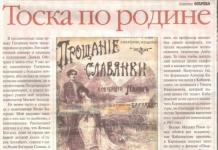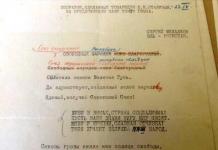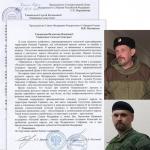Any enterprise that has vehicles at its disposal and uses them for production purposes must take care of a reliable mechanism for accounting for fuels and lubricants. In the article, we will use examples to understand the specifics of reflecting operations with fuels and lubricants and consider.
In accounting, fuels and lubricants are reflected on account 10. Depending on the location of fuels and lubricants, the following analytical accounting groups are used:
- fuels and lubricants in the warehouse;
- paid coupons;
- fuel in tanks.
Purchasing fuel and lubricants using coupons
In March 2016, Avtolyubitel LLC purchased a gasoline coupon worth 1,020 rubles, VAT 156 rubles. The coupon was issued to the driver A.K. Kondratyev, who purchased 60 liters of gasoline using a coupon (17 rubles/liter), VAT 9.15 rubles. At the end of March 2016, 60 liters of gasoline were consumed.
| Dt | CT | Description | Sum | Document |
| 60 | Funds were transferred to pay for a gasoline coupon | 1020 rub. | Payment order | |
| 10 Coupons received | 60 | Posting a coupon for gasoline (60 l) | 864 rub. | Sales Invoice |
| 19 | 60 | Reflection of VAT on the purchased coupon | 156 rub. | Sales Invoice |
| 10 Coupons issued | 10 Coupons received | The ticket was issued to the driver A.K. Kondratyev. | 864 rub. | Book of movement of coupons |
| 10 Gasoline in gas tanks | 10 Coupons issued | Gasoline filled into the bank is recorded in accounting | 864 rub. | Gas station receipt, tear-off coupon for coupon |
| 68 VAT | 19 | VAT deductible | 156 rub. | Invoice |
Use and disposal of fuel and lubricants
In December 2015, Jupiter LLC purchased 115 liters of gasoline at a price of 41 rubles/liter excluding VAT. At the beginning of the month, Jupiter LLC registered 35 liters of gasoline of the same brand at an average cost of rubles per liter. To refuel the car, 45 liters of gasoline were provided.
The average write-off cost for December 2015 is 42 rubles. (115 l * 41 rub. + 35 l * rub.) / (115 l + 35 l).
The write-off of fuel and lubricants at Jupiter LLC is carried out according to established standards. The consumption rate for this vehicle is 8 km, the correction factor is 10%. According to the waybill, in December 2015 110 km were covered.
Gasoline consumption in December is 9.68 l (0.01 * 110 * 8 * (1 + 0.01 * 10).
The amount to be written off is 407 rubles. (9.68 l * 42 rub.)
Shortage of fuel and lubricants
Based on the results of the inventory, a shortage of fuel and lubricants was identified at Garant 1 LLC. The accounting value of fuel and lubricants was 1030 rubles, the market value was 1075 rubles. The person guilty of the crime was identified as the driver A.K. Kondratyev, who admitted his guilt and agreed to repay the amount of the shortfall at his own expense. September 01, 2015 Kondratyev deposited 750 rubles into the cash register. to pay off the debt.
In the accounting of Garant 1 LLC, these transactions were reflected as follows:
| Dt | CT | Description | Sum | Document |
| 10 | Reflection of the cost of shortage of fuel and lubricants identified during | 1030 rub. | Inventory sheet | |
| 73 | Attribution of the cost of the shortage to the culprit Kondratyev A.K. (book value) | 1030 rub. | The act of identifying the culprit | |
| 73 | 98 | Reflection of the difference between the book value and market value of fuel and lubricants (1075 rubles - 1030 rubles) | 45 rub. | Collation statement |
| 50 | 73 | Kondratyev A.K. paid off the shortage of fuel and lubricants through the cash register | 750 rub. | Receipt cash order |
| 98 | 91/1 | Inclusion in income of the difference between the market and book value of missing fuel and lubricants (45 rubles * (750 rubles / 1075 rubles) | 31 rub. | Collation statement |
Overconsumption of fuel and lubricants
Based on the results of October 2015, Zarya 1 LLC was found to have excessive fuel consumption on a company vehicle in excess of the established standards. The commission found that fuel and lubricants were consumed in excess of the norm due to the fault of the driver P.K. Kondratenko, in connection with which a decision was made to recover the amount of overexpenditure in the amount of 2143 rubles, VAT 327 rubles. from the guilty person. Kondratenko deposited the excess amount into the cash register.
The following entries were reflected in the accounting of Zarya 1 LLC:
| Dt | CT | Description | Sum | Document |
| 68 VAT | 19/3 | Restoring VAT deduction | 327 rub. | Commission act |
| 10/3 | Reflection of the cost of fuels and lubricants that were consumed in excess of the norm | 1816 rub. | Commission act | |
| 19/3 | Reflection of VAT on the cost of fuels and lubricants that were consumed in excess of the norm | 327 rub. | Commission act | |
| 73/2 | Attribution of the cost of fuel and lubricants to settlements with the driver | 2143 rub. | Commission act | |
| 50 | 73/2 | The cost of fuels and lubricants consumed in excess of the norm was paid by the driver P.K. Kondratenko. to the cashier | 2143 rub. | Receipt cash order |
Unified samples of waybills were approved by Decree of the State Statistics Committee of Russia dated November 28, 1997 No. 78. However, they are not mandatory for use.
If unified sample waybills are not suitable for some reason (for example, some of the details are not used or there are no necessary indicators), you can independently develop forms of waybills. Record the use of waybills in the accounting policy (clause 4 of PBU 1/2008).
Did you decide to develop the form of the waybill yourself? Then check that it contains all the mandatory details provided for in Section II of Order No. 152 of the Ministry of Transport of Russia dated September 18, 2008. In particular, this is the number of the waybill in chronological order, information about its validity period, information about the driver, information about the transport means and others. You can also provide additional details that take into account the specifics of the organization’s activities.
Plus, such a form must meet other legal requirements for primary documents (Part 2 of Article 9 of the Law of December 6, 2011 No. 402-FZ).
Please fill out one copy of the waybill for each vehicle. And the type of car must be immediately indicated in the name of the waybill. For example: a waybill for a passenger car or a waybill for a bus. The form must be filled out by an authorized employee of the organization (for example, a dispatcher or secretary of a motor vehicle fleet, if there is one). All waybills must be numbered and certified with a seal (stamp).
When leaving the car and after it returns to the garage, the waybill must be certified by the mechanic or employee responsible for the operation of the vehicle with his signature (indicating his full name) or the appropriate stamp.
The dates and times of the driver’s pre-trip and post-trip medical examination are set by the medical professional who conducted the examination. This data must also be certified by his signature (indicating his full name) or an appropriate stamp. In addition, based on the results of the pre-trip examination, the medical worker must make an entry in the waybill: “Passed a pre-trip medical examination and is cleared to perform work duties.” And according to the results of the post-trip examination, the entry: “Passed a post-trip medical examination.” This is provided for in paragraphs 16 and 17 of the Procedure, approved by order of the Ministry of Health of Russia dated December 15, 2014 No. 835n.
Advice: If it is not possible to keep a doctor on staff, then you can enter into a contract agreement with a medical worker. Or register him as an external part-time worker. This way you can avoid disputes with inspectors.
In practice, few people comply with the requirement that the mark on the waybill must be made by the health worker who conducted the examination. Often, if there is no full-time doctor in the company, this is done not by a medical worker (as it should be according to the rules), but by one of their own, for example, the head of the transport department. In this case, the organization commits a violation.
The fact is that pre-trip and post-trip medical examinations should be carried out by:
Medical workers who have higher and (or) secondary specialized education (including employees on the organization’s staff);
Or medical or other organizations carrying out medical activities with the appropriate license.
In this case, the responsibility to organize mandatory pre-trip and post-trip inspections rests with the organization.
This is provided for in paragraphs 8 and 9 of the Procedure, approved by order of the Ministry of Health of Russia dated December 15, 2014 No. 835n.
Based on this, carrying out pre-trip (post-trip) inspections by other persons is a violation for which the organization can be fined.
Attention: if they come to you with an inspection from Roszdravnadzor and see that the entries in the waybills were made not by a qualified doctor, but by someone else, the company may be accused of violating the procedure for the driver’s medical examination (Article 11.32 of the Code of Administrative Offenses of the Russian Federation).
And this will be followed by an administrative fine:
- for an official (for example, for a manager) - from 2000 to 3000 rubles;
- for an organization or entrepreneur - from 30,000 to 50,000 rubles.
Therefore, it is still safer to at least conclude an agreement with a health worker.
In addition, for the absence of a note on the waybill that the driver has undergone a pre-trip medical examination, the traffic police inspector may fine:
- manager - 5,000 rubles;
- organization or entrepreneur - 30,000 rubles.
Such measures of liability are provided for in Part 2 of Article 12.31.1 of the Code of the Russian Federation on Administrative Offences.
Issue a waybill for every day or any other period of no more than one month. If a vehicle is used by several drivers in shifts, then several waybills can be issued for one vehicle at once - for each driver.
This procedure for filling out waybills is provided for in Section III of Order No. 152 of the Ministry of Transport of Russia dated September 18, 2008.
Advice: When preparing waybills, fill out all the required details carefully and without errors. During the inspection, inaccuracies may become grounds for inspectors to exclude waybills from the documents confirming expenses. In this case, the justification of the costs will have to be proven in court.
The arbitration practice that has developed when considering such disputes is heterogeneous. Some courts point out: inconsistencies in waybills do not refute the fact that the organization had expenses associated with business activities (see, for example, the ruling of the Supreme Arbitration Court of the Russian Federation dated December 15, 2008 No. VAS-16222/08, decisions of the Federal Antimonopoly Service of the North Caucasus District dated November 26, 2009 No. A32-24509/2007, dated August 27, 2008 No. F08-5063/2008).
At the same time, many courts confirm: expenses for fuel and lubricants do not reduce the income tax base if the waybills do not contain information about the route, mileage, speedometer readings, if the waybills are signed by unauthorized persons, there are no transcripts of signatures, etc. (see ., for example, the determination of the Supreme Arbitration Court of the Russian Federation dated August 30, 2013 No. VAS-11880/13, the resolution of the Federal Antimonopoly Service of the Ural District dated March 5, 2009 No. F09-946/09-S5, the West Siberian District dated November 20, 2009 No. A46-11958/2009).
If it is impossible to fill in any of the details of the waybill, then the reason for this must be documented and indicated in the appropriate field. In particular, such a situation may arise if, due to a malfunction of the speedometer, it is impossible to fill in the “Speedometer readings” field in the waybill. In this case, reflect the fact of the breakdown in the appropriate document (for example, you can draw up a report on the identified malfunctions (defects) of the fixed asset). Indicate the fact of equipment failure and the details of such a document (for example, a report) in the “Speedometer readings” field. In addition, a document confirming the distance covered by the car with a faulty speedometer must be attached to the waybill. It must contain all the necessary details provided for primary documents (Article 9 of the Law of December 6, 2011 No. 402-FZ). You can confirm your mileage, for example, with an accounting certificate. It reflects the distance traveled by the car (it can be determined as a result of measurements). This procedure is recommended in the letter of the Federal Tax Service of Russia dated July 16, 2010 No. ШС-37-3/6848.
Attention: An employee's use of a company vehicle without waybills or other supporting documents may be regarded as using the vehicle for personal purposes. If so, inspectors may require personal income tax to be assessed on income received in kind. For example, based on the cost of renting a car for the period of use. This was stated in the letter of the Ministry of Finance of Russia dated June 11, 2014 No. 03-04-05/28243.
To control which of the drivers were issued waybills and when, and whether they were submitted to the accounting department on time, make entries in the logbook for recording the movement of waybills (clause 17 of section III of the order of the Ministry of Transport of Russia dated September 18, 2008 No. 152). Resolution of the State Statistics Committee of Russia dated November 28, 1997 No. 78 provides for a standard form of this document (Form No. 8).
Issued waybills must be stored for five years (clause 18 of section III of the order of the Ministry of Transport of Russia dated September 18, 2008 No. 152).
Situation: how to make corrections in the travel log?
If an error is made in the travel log, make corrections to it according to the general rules:
- cross out the incorrect inscription with one line, and the corrected entry must be readable;
- next to it, mark “Corrected” and indicate the correct inscription;
- indicate the date the adjustment was made;
- The employee responsible for maintaining the journal must certify the correction with his signature.
Such rules are established by paragraph 7 of Article 9 of the Law of December 6, 2011 No. 402-FZ, section 4 of the Regulations approved by the Ministry of Finance of the USSR on July 29, 1983 No. 105.
An example of filling out a waybill for a special vehicle
A.S. Kondratyev works as a driver at LLC “Production Company “Master””. The organization uses special vehicles, including garbage trucks, in its activities.
On August 28, Kondratyev was fulfilling an order for garbage removal. At the same time, a waybill for a special vehicle was issued.
Situation: how to describe the route of a car in a waybill?
Indicate your specific destination on your itinerary. For example, like this: “Place of departure - Moscow, st. Novodmitrovskaya, 34; destination - Vladimir, st. Startovaya, 8.” Entries like “trips around the city” are not allowed. If an organization operates a car within one locality, each address where the driver visited must be written down on the waybill. In addition, you must indicate the time of departure, arrival and mileage along the entire route. If these columns are filled in incorrectly, then inspectors may consider the costs of fuel and lubricants for this waybill to be unreasonable. The fact is that the absence of information about a specific place and time in the waybill does not allow us to judge whether the car is being used for business purposes. This is stated in letters of the Ministry of Finance of Russia dated February 20, 2006 No. 03-03-04/1/129, Federal Tax Service of Russia for Moscow dated November 13, 2006 No. 20-12/100253, dated June 19, 2006 No. 20-12/54213.
Advice: expenses for gasoline can be recognized even if the specific route for the vehicle is not indicated on the waybill. But when using this approach, be prepared for disputes with inspectors.
The following arguments will help in the dispute. To attribute the cost of fuel and lubricants to expenses, you need correctly executed primary documents confirming the production purposes of operating the vehicle (clause 1 of article 252 of the Tax Code of the Russian Federation, part 1 of article 9 of the Law of December 6, 2011 No. 402-FZ). Organizations (except motor transport) can use travel forms developed independently for these purposes. The main thing is that they contain all the mandatory details given in Section II of Order No. 152 of the Ministry of Transport of Russia dated September 18, 2008, as well as those that should be in any primary office (Article 9 of the Law of December 6, 2011 No. 402- Federal Law).
However, the route of the car, as well as the address in the route, are not listed among the required details. Therefore, it is possible to recognize the cost of fuel and lubricants as expenses, even if such data is not included in the waybill. But it is possible that such a position will have to be defended in court. And it is difficult to predict in advance which side the judges will take.
Thus, there are examples from arbitration practice when judges supported the organization (see, for example, decisions of the FAS Moscow District dated September 18, 2013 No. A40-19421/13-99-60, dated August 26, 2010 No. KA-A41/ 9668-10, dated July 20, 2010 No. KA-A40/7436-10, Northwestern District dated November 18, 2009 No. A44-1106/2009, dated July 6, 2009 No. A56-50333/2008, Ural District dated October 12, 2010 No. F09-8425/10-S3).
At the same time, there are decisions in favor of tax inspectors (see, for example, the decision of the Supreme Arbitration Court of the Russian Federation dated August 30, 2013 No. VAS-11880/13, the resolution of the Federal Antimonopoly Service of the West Siberian District dated May 4, 2012 in case No. A27- 10606/2011, East Siberian District dated July 16, 2010 No. A33-10451/2009, dated October 21, 2009 No. A33-13602/08).
Situation: how often do you need to issue a vehicle waybill??
This frequency depends on whether the organization is a motor transport enterprise or not.
If we are talking about a motor transport company, then issue waybills daily. Since in this case such documents are valid for one day (shift). For longer periods, waybills are issued only for business trips. Then the driver independently writes down a detailed route indicating the relevant dates. This follows from section 2 of the instructions approved by Resolution of the State Statistics Committee of Russia dated November 28, 1997 No. 78.
Organizations that are not classified as motor transport issue waybills at a frequency that allows them to justify the costs of fuel and lubricants. But at least once a month (clause 10 of the order of the Ministry of Transport of Russia dated September 18, 2008 No. 152, letter of the Ministry of Finance of Russia dated November 30, 2012 No. 03-03-07/51).
Metering data
Expenses for fuel and lubricants can be confirmed not only by waybills, but also by any other documents that allow you to reliably determine the distance traveled. For example, documents filled out on the basis of data from metering and control devices for the movement of vehicles using the GLONASS satellite navigation system or other systems. Such clarifications are contained in the letter of the Ministry of Finance of Russia dated June 16, 2011 No. 03-03-06/1/354.
Accounting: write-off of fuel and lubricants
Based on the waybill (other documents), calculate the amount of fuel that is written off as expenses. To do this, use the formula:
| - the cost of consumed fuel is written off (based on the waybill). This order follows from the Instructions for the chart of accounts (accounts 10, 20, 23, 26, 44). |
Fuel and lubricants sold at gas stations (gas stations) and other facilities for similar purposes can be purchased: using coupons. on fuel cards. for cash payment through an accountable person. An accountable person is a person who receives funds on account to pay for goods (work, services) in the interests of the organization where he is an official employee. To receive cash on account, the employee must write an application in any form. On this application, the head of the legal entity personally approves the amount and period for which cash is issued. To confirm agreement with the contents of the document, the manager endorses and dates it. The issuance of funds on account is carried out subject to full repayment by the accountable person of the debt on the amount of money previously received on account. Based on the application of the accountable person, an expenditure cash order is issued (clause 4.1, clause 4.4 of the Regulations of the Central Bank of the Russian Federation dated October 12, 2011 No. 373-P “On the procedure for conducting cash transactions with banknotes and coins of the Bank of Russia on the territory of the Russian Federation” (hereinafter referred to as Regulation No. 373-P)). The balance of the unused advance is handed over by the accountable person to the organization's cash register using a cash receipt order, the overexpenditure is compensated, and the money is issued to the accountable person using a cash receipt order. After the employee has completed the organization’s instructions, he is obliged to provide an advance report within three working days after the expiration of the period for which cash was issued for the report, or from the day he returned to work (paragraph 2, clause 4.4 of Regulation No. 373-P , clause 26 of the Decree of the Government of the Russian Federation of October 13, 2008 No. 749 “On the peculiarities of sending employees on business trips”). The organization has the right to independently develop an advance report form, which must contain the mandatory details listed in Part 2 of Art. 9 of the Federal Law of December 6, 2011 No. 402-FZ “On Accounting” (hereinafter referred to as Law No. 402-FZ) or use the unified form AO-1 (for more details on primary accounting documents, see here). The employee must attach documents confirming the expenses incurred to the advance report (Article 252 of the Tax Code of the Russian Federation). Based on paragraph 1 of Art. 5 of the Federal Law of May 22, 2003 No. 54-FZ “On the use of cash register equipment when making cash payments and (or) settlements using payment cards,” organizations (IP) are required to issue to customers when making cash payments and (or) settlements using payment cards at the time of payment, cash receipts printed by cash register equipment. In accordance with clause 4 of the Decree of the Government of the Russian Federation dated July 30, 1993 No. 745 “On approval of the Regulations on the use of cash registers when making cash settlements with the population,” the list of mandatory details of a cash receipt does not contain all the details of the primary accounting document in accordance with Law No. 402 -FZ. Since a cash register check is issued not to an organization, but to an individual, the organization’s basis for posting inventory items purchased for it by an employee are primary accounting documents, in particular, advance reports, sales receipts, receipts for a cash receipt order, etc. (letter from the Federal Tax Service Russia dated June 25, 2013 No. ED-4-3/11515@). If VAT is highlighted on a separate line in a cash receipt, but there is no invoice, then the buyer does not have the right to deduct the amount of VAT (letter of the Ministry of Finance of Russia dated 03/09/2010 No. 03-07-11/51, letter of the Ministry of Finance of Russia dated 03.08. 2010 No. 03-07/11/335). If the cash register receipt states that the cost of the goods includes VAT and there is no invoice, then this VAT cannot be deducted either. If the VAT amount is not highlighted as a separate line, then the entire cost of the goods can be included in expenses. Note! The limit for cash payments within the framework of one agreement concluded between organizations (individual entrepreneurs) should not exceed 100,000 rubles. (clause 1 of the Directive of the Central Bank of the Russian Federation dated June 20, 2007 No. 1843-U). After approval of the advance report, the organization receives fuel and lubricants by brand, quantity and cost. Ownership of fuel passes from the seller to the buyer upon receipt of gasoline at a gas station at the time the fuel is drained into the vehicle tank or other appropriate container. Filling gasoline into the tank of a car on the basis of a gas station cash receipt only confirms the fact of payment for material assets in the form of gasoline (Article 493 of the Civil Code of the Russian Federation), but does not confirm the fact that gasoline is used by a certain car for certain purposes. For accounting purposes, fuels and lubricants are classified as inventories and are accounted for in accordance with PBU 5/01 “Accounting for inventories.” Analytical accounting of inventories is carried out at actual cost in subaccount 10.03 “Fuel” of account 10 “Materials”. For tax accounting purposes, organizations have the right to take into account expenses for the purchase of fuel and lubricants as part of material expenses (clause 5, clause 1, article 254 of the Tax Code of the Russian Federation) or as part of other expenses associated with production and sales, as the cost of maintaining official vehicles (clause 11 Clause 1 of Article 264 of the Tax Code of the Russian Federation). Write-off of fuel and lubricants as expenses is carried out as they are spent in actual volumes on the basis of properly executed documents, in particular according to waybills (letter of the Ministry of Finance of Russia dated August 25, 2009 No. 03-03-06/2/161). Waybill is a document that confirms fuel consumption, data on actual mileage and the production nature of the vehicle’s route (form No. 0345001, approved by Decree of the State Statistics Committee of Russia dated November 28, 1997 No. 78). Organizations can develop their own document form, which must contain all the details provided for in Article 9 of the Federal Accounting Law. Transport organizations are required to use the forms of waybills approved by Order No. 152 of the Ministry of Transport of Russia dated September 18, 2008. Actual fuel consumption is determined based on vehicle mileage data using fuel consumption standards established for the corresponding car brand. When rationing consumption for fuels and lubricants, write-off is carried out for each vehicle separately and is carried out in one of the following ways: according to consumption rates approved by the head of the enterprise, or Consumption standards for fuels and lubricants in road transport (approved by order of the Ministry of Transport of Russia dated March 14, 2008 No. AM-23 -R); based on data on actually produced fuel (confirmed by inventory of residues). If the accounting policy of the organization provides for the use of fuel consumption standards, then the amount of fuel consumed within the limits is included in the organization’s expenses (Dt 20, 23, 26, 44, etc. Kt 10.03), and fuel consumption in excess of the norm is included in other expenses (Dt 91.02 Kt 10.03). For profit tax purposes, expenses for fuel and lubricants are not standardized and are taken into account in full if they are economically justified, documented and incurred for the purpose of carrying out activities aimed at generating income (clause 1 of Article 252 of the Tax Code of the Russian Federation, letter of the Ministry of Finance of Russia dated January 30, 2013 No. 03-03-06/2/12). Let's consider an example in which an employee was given funds from the cash register of an organization against a report for the purchase of gasoline to refuel a car. The employee provides an advance report with a cash receipt attached, as well as a waybill, on the basis of which the consumed fuel is written off as expenses. Example The organization Trading House LLC has its own Volkswagen Passat B7 car on its balance sheet. Operation of the vehicle is intended for administrative purposes. Based on the employee’s application, funds were issued from the organization’s cash desk for reporting purposes in the amount of RUB 5,000.00. to purchase VPower AI-95 class 5 gasoline for cash at a fuel company gas station. After completing the official task, the employee submitted an advance report with a cash receipt to the organization’s accounting department no later than three working days. The cash receipt indicates: the name of the brand of gasoline, quantity, cost of one liter and amount. The VAT amount is not shown as a separate line. Also, the check does not contain the words “including VAT”. No invoice provided. On the same day, the employee provided the accounting department with a waybill, on the basis of which the consumed fuel in the amount of RUB 5,000.00 was written off as expenses. The balance of the unused accountable amount is handed over to the organization's cash desk. According to the internal order of the head of the organization, accountable amounts are issued for a period of no more than 14 calendar days. In accordance with the accounting policy of the organization, expenses for fuel and lubricants are not standardized in tax accounting, that is, they are taken into account in full. The following business operations are carried out: 1. Cash is issued against the driver for the purchase of fuel (registration of a cash receipt order). 2. Fuel is capitalized after approval of the advance report (registration of the advance report). 3. Return of unused accountable items to the organization’s cash desk (registration of a cash receipt order). 4. The cost of consumed gasoline is taken into account in expenses (filling out a request-invoice for the release of materials in the M-11 form).
Costs for fuels and lubricants and their recognition in tax accounting are a sore point for accountants of most organizations. To what extent and on what basis can the income tax base for these expenses be reduced, says L.P. Fomicheva (728-82-40, [email protected]), tax consultant. Regarding automation, the material was prepared by specialists of the Authorized Training Center "Master Service Engineering".
General provisions for accounting for fuel and lubricants
- fuel (gasoline, diesel fuel, liquefied petroleum gas, compressed natural gas);
- lubricants (motor, transmission and special oils, greases);
- special fluids (brake and coolant).
An organization that owns, leases or uses cars for free and uses them in its activities to generate income can attribute fuel and lubricants expenses to its cost. But not everything is as simple as it seems.
Are standards needed when accounting for fuels and lubricants?
Currently, accounting regulations do not establish maximum standards for attributing to the cost of costs associated with the use of fuels and lubricants in the operation of vehicles. The only condition for writing off fuel and lubricants as cost is the availability of documents confirming the fact of their use in the production process.
When calculating taxable profit, you must be guided by Chapter 25 of the Tax Code of the Russian Federation. The costs of maintaining official vehicles, which include the costs of purchasing fuel and lubricants, are considered other expenses associated with production and sales (subclause 11, clause 1, article 264 and subclause 2, clause 1, article 253 of the Tax Code of the Russian Federation). The Tax Code of the Russian Federation does not limit the costs of maintaining official vehicles by any standards, therefore, for tax purposes, expenses for fuel and lubricants are written off according to actual costs. However, they must be documented and economically justified (clause 1 of Article 252 of the Tax Code of the Russian Federation).
According to the Russian Ministry of Finance, set out in letter No. 03-03-02-04/1/67 dated March 15, 2005, expenses for the purchase of fuels and lubricants within the limits defined in the technical documentation for the vehicle can be recognized for tax purposes if the requirements are met established by the above-mentioned paragraph 1 of Article 252 of the Tax Code of the Russian Federation. The Department of Tax Administration of Russia for Moscow, in a letter dated September 23, 2002 No. 26-12/44873, expressed a similar opinion.
The requirement of validity obliges the organization to develop and approve its own standards for the consumption of fuel, lubricants and special liquids for its vehicles, which are used for production activities, taking into account its technological features. The organization develops such standards to control the consumption of fuel and lubricants for operation, maintenance and repair of automotive equipment.
When developing them, an organization can proceed from the technical characteristics of a particular car, the time of year, existing statistics, reports of control measurements of fuel and lubricant consumption per kilometers, compiled by representatives of organizations or car service specialists on its behalf, etc. When developing them, downtime in traffic jams, seasonal fluctuations in fuel consumption and other correction factors. Standards are developed, as a rule, by the technical services of the organization itself.
The procedure for calculating fuel consumption rates is an element of the organization’s accounting policy.
They are approved by order of the head of the organization. All drivers of vehicles should be familiarized with the order. The absence of approved standards in an organization can lead to abuse by drivers and, consequently, to unjustified additional costs.
Actually, these norms are used as economically justified for accounting purposes for writing off fuel and lubricants and for tax purposes when calculating income tax.
When developing these standards, the organization can use the Standards for the consumption of fuel and lubricants in road transport, approved by the Ministry of Transport of Russia on April 29, 2003 (guidance document No. R3112194-0366-03 agreed with the head of the Department of Material, Technical and Social Security of the Ministry of Taxes of Russia and applied from July 1 2003). The document provides the values of basic fuel consumption standards for automotive rolling stock, fuel consumption standards for the operation of special equipment installed on vehicles, and the methodology for their application, as well as standards for lubricating oil consumption.
Fuel consumption standards are established for each brand and modification of vehicles in use and correspond to certain operating conditions of road transport.
Fuel consumption for garage and other household needs (technical inspections, adjustment work, running-in of engine and car parts after repairs, etc.) is not included in the standards and is established separately.
Peculiarities of vehicle operation related to road transport, climatic and other factors are taken into account by applying correction factors to the basic standards. These coefficients are set as percentages of increase or decrease in the initial value of the norm. If it is necessary to apply several surcharges simultaneously, the fuel consumption rate is set taking into account the sum or difference of these surcharges.
The governing document also establishes standards for the consumption of lubricants per 100 liters of total fuel consumption, calculated according to the standards for a given vehicle. Oil consumption rates are set in liters per 100 liters of fuel consumption, lubricant consumption rates - respectively, in kilograms per 100 liters of fuel consumption. Here, too, there are correction factors depending on the operating conditions of the machine. The consumption of brake and coolant fluids is determined in the number of refills per vehicle.
Is it necessary to apply the standards established by the Ministry of Transport of Russia as the only possible ones? No. The Ministry of Transport of Russia, according to Article 4 of the Tax Code of the Russian Federation, does not have the right to develop any standards for tax purposes. The standards approved by the Ministry of Transport of Russia are not an order and have not been registered with the Ministry of Justice of Russia as a regulatory legal act mandatory for use by organizations throughout the Russian Federation. Taking into account all these circumstances, we can say that, despite the name “Guide Document”, as well as the fact that it has been agreed with the Ministry of Taxes and Taxes of Russia, the basic standards for fuel and lubricant consumption in road transport are only advisory in nature.
But the likelihood that tax authorities will still rely on these standards, agreed upon with their department, during checks is quite high. After all, if an organization’s expenses for the purchase of fuels and lubricants significantly exceed the standards established by the Russian Ministry of Transport, their economic justification may raise doubts among the tax authorities. And this is logical: the standards of the Russian Ministry of Transport are well thought out and quite reasonable. And although they were not developed for tax purposes, they can be used in court and, it seems, will serve as a convincing argument for judges.
Therefore, an organization needs to be prepared to justify the reasons for deviations from the standards it applies for writing off fuel and lubricants as expenses from those approved by the Ministry of Transport of Russia.
Waybills
The purchase of fuel and lubricants does not yet indicate their actual consumption on a car used for business purposes. Confirmation that the fuel was spent for production purposes is a waybill, which is the basis for writing off fuel and lubricants as cost. This is confirmed by the tax authorities (letter of the Moscow Tax Administration No. 26-12/31459 dated April 30, 2004) and Rosstat (letter of the Federal State Statistics Service dated February 3, 2005 No. IU-09-22/257 “On waybills”). The waybill contains speedometer readings and fuel consumption indicators, and indicates the exact route, confirming the production nature of transportation costs.
Primary documents can be accepted for accounting if they are drawn up in a unified form (clause 2, article 9 of the Federal Law of November 21, 1996 No. 129-FZ “On Accounting”).
Resolution of the State Statistics Committee of Russia dated November 28, 1997 No. 78 approved the following forms of primary documentation for recording the operation of vehicles:
Since most organizations operate company cars or trucks, they use waybill forms for these vehicles.
A truck waybill (forms No. 4-c or No. 4-p) is the main primary document for payments for cargo transportation, writing off fuel and lubricants as expenses for ordinary activities, calculating the driver’s wages, and also confirms the production nature of the expenses incurred. When transporting commercial cargo, waybills of forms No. 4-c and No. 4-p are issued to the driver along with the consignment note.
Form No. 4-c (piecework) is used subject to payment for vehicle work at piecework rates.
Form No. 4-p (time-based) is used subject to payment for vehicle work at a time-based rate and is designed for simultaneous cargo transportation for up to two customers during one working day (shift) of the driver.
Tear-off coupons of the waybill, forms No. 4-c and No. 4-p, are filled out by the customer and serve as the basis for the organization-owner of the vehicle to present an invoice to the customer. The corresponding tear-off coupon is attached to the invoice.
The waybill, which remains with the organization that owns the vehicle, repeats identical entries about the time the vehicle was operated by the customer. If goods are transported by a vehicle operating on a time-based basis, then the numbers of the invoices are entered in the waybill and one copy of these invoices is attached. Waybills are stored in the accounting department together with shipping documents for their simultaneous verification.
The waybill for a company car (Form No. 3) serves as the main primary document for writing off fuel and lubricants for expenses associated with managing the organization.
The journal for recording the movement of waybills (Form No. 8) is used by the organization to register the waybills issued to the driver and the waybills handed over to the accounting department after processing.
The waybill is issued to the driver by the dispatcher or another employee authorized to release him for the trip. But in small organizations this may be the driver himself or another employee who is appointed by order of the head of the organization.
The waybill must include the serial number, date of issue, stamp and seal of the organization that owns the car.
The waybill is valid for one day or shift only. For a longer period, it is issued only in the case of a business trip when the driver performs a task for more than one day (shift).
The route of transportation or official assignment is recorded at all points of the vehicle's route on the waybill itself.
Responsibility for the correct execution of the waybill lies with the heads of the organization and those responsible for operating the vehicles and participating in filling out the document. This is once again emphasized in the already mentioned letter of the Federal State Statistics Service (Rosstat) dated 02/03/2005 No. IU-09-22/257 “On waybills”. It also says that all details must be filled out in unified forms. Employees who completed and signed the documents are responsible for the accuracy of the data contained therein.
If the waybill is filled out incorrectly, this gives the inspection authorities grounds to exclude fuel costs from expenses.
An accountant who takes into account fuel and lubricants should be especially interested in the right front part of the waybill. Let's look at it using the example of a passenger car waybill (form No. 3).
The speedometer readings at the beginning of the day of work (the column next to the signature authorizing departure) must coincide with the speedometer readings at the end of the previous day of operation of the car (the column when returning to the garage). And the difference between the speedometer readings for the current day of work should correspond to the total number of kilometers traveled per day, indicated on the reverse side.
The “Fuel Movement” section is completed in full with all details, based on actual costs and instrument performance.
The remaining fuel in the tank is recorded on a sheet at the beginning and end of the shift. The calculation of consumption is indicated according to the standards approved by the organization for this machine. Compared to this norm, the actual consumption, savings or excess consumption in relation to the norm is indicated.
To determine the standard fuel consumption per shift, you need to multiply the vehicle mileage per working day in kilometers by the standard gasoline consumption in liters per 100 kilometers, and divide the result by 100.
To determine the actual fuel consumption per shift, the amount of fuel filled into the car tank during the shift should be added to the remaining fuel in the car tank at the beginning of the shift, and from this amount subtract the remaining gasoline in the car tank at the end of the shift.
The reverse side of the sheet indicates the destination, time of departure and return of the car, as well as the number of kilometers traveled. These indicators are the most important; they serve as the basis for including the cost of consumed fuel in expenses and confirm what operations were associated with the use of the machine (receiving valuables from suppliers, delivering them to customers, etc.).
The lower part of the reverse side of the waybill is important for the drivers' payroll.
At the end of this section, a few words about whether waybills should be filled out only for drivers.
Sometimes such a conclusion is drawn from the text of the Resolution of the State Statistics Committee of Russia dated November 28, 1997 No. 78 (hereinafter referred to as Resolution No. 78) and the sheet forms themselves. And they draw the following conclusion - if the staffing table does not directly provide for the position of a driver, then the organization is not obligated to draw up the corresponding document. In the author's opinion, this is incorrect; a driver is a function, not just a position.
It is important that the organization's official vehicle is operated, and who controls it is the organization's business. For example, a company car can be driven by a director or manager, and expenses for it will also be taken into account only on the basis of a travel document. In addition, if this document is not available on the road, the employee who actually performs the functions of a driver may have problems with traffic police officers.
Formally, waybills are issued by organizations. This is stated in Resolution No. 78. Entrepreneurs, on formal grounds, should not fill out a waybill, since, according to Article 11 of the Tax Code of the Russian Federation, they are individuals.
But they use transport for production purposes. The Russian Tax Inspectorate, in a letter dated October 27, 2004 No. 04-3-01/665@, drew attention to the fact that waybills should be used by them.
Accounting for fuel and lubricants
Expenses for the purchase of fuels and lubricants are associated with servicing the transportation process and relate to expenses for ordinary activities under the element “Material costs” (clauses 7, 8 of PBU 10/99 “Organization expenses”). Expenses include the sum of all actual expenses of the organization (clause 6 of PBU 10/99).
The organization's accounting department maintains quantitative and total accounting of fuels and lubricants and special liquids. Refueling of vehicles is carried out at gas stations in cash or by bank transfer using coupons or special cards.
Without touching on the specifics of the formation of the initial cost of fuel and lubricants and VAT accounting, let’s say that an accountant, based on primary documents (advance reports, invoices, etc.), receives fuel and lubricants by brand, quantity and cost. Fuel and lubricants are accounted for on account 10 "Materials" subaccount 3 "Fuel". This is provided for by the Chart of Accounts (approved by order of the Ministry of Finance of Russia dated October 31, 2000 No. 94n).
- "Fuels and lubricants in warehouses (gasoline, diesel fuel, gas, oil, etc.)";
- "Paid coupons for gasoline (diesel fuel, oil)";
- “Gasoline, diesel fuel in car tanks and drivers’ coupons”, etc.
Since there are many types of fuels and lubricants, subaccounts of the second, third and fourth orders are opened to account for them, for example:
- account 10 sub-account “Fuel”, sub-account “Fuels and lubricants in warehouses”, sub-account “Gasoline”, sub-account “Gasoline AI-98”;
- account 10 sub-account "Fuel", sub-account "Fuels and lubricants in warehouses", sub-account "Gasoline", sub-account "Gasoline AI-95".
In addition, analytical records of issued fuels and lubricants are kept for financially responsible persons - vehicle drivers.
The accountant records the receipt of fuel and lubricants in the materials accounting card according to form No. M-17. An organization can develop its own form of card for recording the receipt and write-off of fuel and lubricants, which is approved by order of the manager or is an appendix to the accounting policy of the organization.
The costs of maintaining the organization's vehicles are written off as the cost of products (works, services). In accounting, costs associated with the transportation process are reflected in balance sheet account 20 “Main production” or 44 “Sales expenses” (only for trade organizations).
The costs of maintaining company vehicles are reflected in balance sheet account 26 “General business expenses”. Enterprises with a fleet of cars reflect the costs associated with their maintenance and operation on balance sheet account 23 “Auxiliary production”. The use of a specific cost account depends on the direction of use of cars. For example, if a truck transported goods for orders from a third-party organization, then the costs of fuel and lubricants are reflected in account 20, and if a passenger car was used for business trips related to the management of the organization, then the costs are reflected in account 26.
In accounting, the write-off of fuel and lubricants is reflected in the accounting entry:
Debit 20 (23, 26, 44) Credit 10-3 “Fuel” (analytical accounting: “fuel and lubricants in vehicle tanks” and other relevant subaccounts) - in the amount actually consumed based on primary documents.
When releasing fuel and lubricants into production or otherwise disposing of them, their assessment in accounting is carried out in one of the following ways (clause 16 of PBU 5/01):
- at the cost of a unit of inventory,
- at the cost of the first purchases (FIFO),
- at the cost of the most recent purchases (LIFO),
- at average cost.
The last method is the most common.
The method chosen by the organization must be recorded in the order on accounting policies.
We draw the attention of accountants to the fact that, as a rule, there is always an amount of gasoline (or other fuel) in car tanks, which represents a carryover balance for the next month (quarter). This balance must continue to be taken into account in a separate sub-account “Gasoline in car tanks” (in analytical accounting for financially responsible persons (drivers).
On a monthly basis, the accountant reconciles the results of the issue, consumption and balance of petroleum products in vehicle tanks.
If the cost of expenses for fuel and lubricants accepted in accounting and tax accounting will be different (for example, due to the driver exceeding the standards adopted by the organization for his car), then taxpayers applying PBU 18/02 will have to reflect permanent tax liabilities.
This is the requirement of paragraph 7 of this provision, which was approved by order of the Ministry of Finance of Russia dated November 19, 2002 No. 114n.
Let's look at accounting for fuel and lubricants using the example of gasoline accounting for a specific driver.
Example
Driver of a passenger car A.A. Sidorov receives funds from the cash register of Zima LLC on account for the purchase of fuel and lubricants and submits advance reports reflecting the costs of their acquisition with the attachment of primary documents.
Gasoline is written off according to standards based on waybills submitted by the driver to the accounting department.
Quantitative and total accounting of fuels and lubricants is carried out using personal cards, the form of which was developed by the organization independently and approved by order of the manager. A card is opened for each driver.
The driver's balance of unwritten gasoline at the beginning of April was 18 liters at 10 rubles.
On April 3, 20 liters of gasoline were purchased for 11 rubles. For simplicity, we do not consider VAT.
On April 1, 2 and 3, the driver consumed 7, 10 and 11 liters of gasoline, respectively.
When writing off materials, the organization uses the moving average cost method, which is calculated on the date of the operation.
From April 1 to April 3, the accountant made the following entries in the driver’s card:
| date | Coming | Consumption | Remainder | ||||||
|---|---|---|---|---|---|---|---|---|---|
| quantity | price | We're standing. | quantity | price | We're standing. | quantity | price | We're standing. | |
| Balance as of 01.04 | 18 | 10,00 | 180,00 | ||||||
| 01.04 | 7 | 10,00 | 70,00 | 11 | 10,00 | 110,00 | |||
| 02.04 | 10 | 10,00 | 100,00 | 1 | 10,00 | 10,00 | |||
| 03.04 | 20 | 11,00 | 220,00 | 11 | 10,95* | 120,48 | 10 | 10,95 | 109,52 |
Note:
* 10.95 = (1l x 10 rub. + 20 l. x 11 rub.) / 21 l
The following entries were made in the organization's accounting:
Debit 26 Credit 10-3 subaccount “A-95 gasoline in the tank of A.A. Sidorov’s car.” - 70 rub. - 7 liters of gasoline were written off according to the norms according to the passenger car waybill form No. 3 for April 1;
Debit 26 Credit 10-3 subaccount “A-95 gasoline in the tank of A.A. Sidorov’s car.” - 100 rub. - 10 liters of gasoline were written off according to the standards according to the passenger car waybill form No. 3 for April 2;
Debit 10-3 subaccount “A-95 gasoline in the tank of A.A. Sidorov’s car.” Credit 71 subaccount "Sidorov" - 220 rubles. - 11 liters of gasoline were capitalized on the basis of a cash register receipt attached to the driver’s advance report; Debit 26 Credit 10-3 subaccount “A-95 gasoline in the tank of A.A. Sidorov’s car.” -120.48 rub. - 11 liters of gasoline were written off according to the norms according to the passenger car waybill form No. 3 for April 3.
Rented transport
You can obtain a vehicle for temporary possession and use by concluding a vehicle rental agreement with a legal entity or individual.
Under a lease agreement, the lessor (lessor) undertakes to provide the lessee (tenant) with property for a fee for temporary possession and use. Unless otherwise provided by the vehicle lease agreement, the lessee bears the costs arising in connection with the commercial operation of the vehicle, including the cost of paying for fuel and other materials consumed during operation (Article 646 of the Civil Code of the Russian Federation). The parties may provide for mixed terms of payment of rent in the form of a fixed share (direct rent) and payment of compensation for the current maintenance of the leased property, which may vary depending on external factors.
In the case where the costs of fuel and lubricants are borne by the transport employer, accounting for fuel and lubricants is identical to the situation with the operation of his own vehicle. Such a car is simply taken into account not as part of fixed assets, but in off-balance sheet account 001 “Leased fixed assets” in the valuation adopted in the contract. A rental fee is charged for its use, but depreciation is not charged.
The rent is taken into account as part of other expenses associated with production and (or) sales, regardless of who rents the car from - a legal entity or an individual (subclause 10, clause 1, article 264 of the Tax Code of the Russian Federation).
At the same time, the status of a lessor affects the tax consequences for other taxes. So, if a car is rented from an individual, he has taxable income.
As for the Unified Social Tax, it is necessary to distinguish between renting a vehicle with and without a crew (clause 1 of Article 236 and 3 of Article 238 of the Tax Code of the Russian Federation).
A waybill is issued for the rented car for the duration of the work, since the organization disposes of the car. And subparagraph 2 of paragraph 1 of Article 253 of the Tax Code of the Russian Federation allows to include in expenses that reduce taxable income all funds spent on the maintenance and operation of fixed assets and other property that is used in production activities. This also applies to fuels and lubricants that are used on a rented car.
Free use of a car
An organization can enter into an agreement for the free use of a car.
Under an agreement for gratuitous use (loan), the borrower is obliged to maintain the item received for gratuitous use in good condition, including carrying out routine and major repairs, as well as bearing all expenses for its maintenance, unless otherwise provided by the agreement.
The organization's expenses for the maintenance and operation of a car received under a free use agreement reduce taxable profit in the generally established manner, if the agreement stipulates that these expenses are borne by the borrower.
Separate rules provided for lease agreements apply to gratuitous use (loan) agreements. Expenses for fuel and lubricants are taken into account in the same way as a rented car, since the organization manages it.
The transfer of property for temporary use under a loan agreement is, for tax purposes, nothing more than a service provided free of charge. The cost of such a service is included by the borrower in non-operating income (clause 8 of Article 250 of the Tax Code of the Russian Federation). This cost must be determined independently, based on data on the market value* of renting a similar car.
Workers' Compensation
Employees are paid compensation for wear and tear on personal vehicles and reimbursed expenses if personal vehicles are used with the consent of the employer for business purposes (Article 188 of the Labor Code of the Russian Federation). The amount of reimbursement of expenses is determined by agreement of the parties to the employment contract, expressed in writing.
Often, by order, the employee is paid compensation at the rate established by the Government of the Russian Federation and on top of this the cost of gasoline.
Since such a provision is not directly provided for in Letter No. 57 of the Ministry of Finance of Russia dated July 21, 1992, the position of the tax authorities on this issue also seems legitimate. The amount of compensation to the employee takes into account reimbursement of the costs of operating a personal passenger car used for business trips: the amount of wear and tear, costs of fuels and lubricants, maintenance and routine repairs (letter of the Ministry of Taxes and Taxes of Russia dated June 2, 2004 No. 04-2-06/419).
Compensation for the use of personal transport for business purposes is paid to employees in cases where their work by type of production (official) activity involves constant official travel in accordance with their job responsibilities.
The initial document that established this compensation is letter of the Ministry of Finance of Russia dated July 21, 1992 No. 57 “On the conditions for paying compensation to employees for the use of their personal cars for business trips.” The document is valid, although the payment standards themselves have changed in the future. This is what we recommend that the accountant read especially carefully. Paragraph 3 states that the specific amount of compensation is determined depending on the intensity of use of a personal car for business trips. The amount of compensation to the employee takes into account reimbursement of the costs of operating a personal passenger car used for business trips (amount of wear and tear, costs of fuels and lubricants, maintenance and routine repairs).
The amount of compensation is calculated using the formula:
K = A + fuels and lubricants + maintenance + TR,
Where
K - amount of compensation,
A - depreciation of the car;
fuels and lubricants - costs for fuels and lubricants;
TO - technical maintenance;
TR - current repairs.
Compensation is calculated on the basis of an order from the head of the organization.
Compensation is calculated monthly in a fixed amount, regardless of the number of calendar days in the month. During the time an employee is on vacation, a business trip, absent from work due to temporary disability, as well as for other reasons, when a personal car is not in use, compensation is not paid.
The most difficult thing in this situation seems to be confirmation of the fact and intensity of use of the machine by the employee. Therefore, the basis for calculating compensation, in addition to the order of the manager, may be a traveling statement or other similar document, the form of which is approved in the order on the accounting policy of the organization. In this case, waybills are not prepared.
Compensations paid to an employee for the use of a personal car for business purposes are expenses for the organization for ordinary activities on the basis of paragraph 7 of PBU 10/99.
Compensation paid to an employee in accordance with the law, within the approved norms, is not subject to personal income tax (Article 217 of the Tax Code of the Russian Federation) and the unified social tax (Article 238 of the Tax Code of the Russian Federation). In this case, the legislative document is the Labor Code of the Russian Federation. Due to the fact that the Government of the Russian Federation has developed compensation standards in relation only to paragraph 11 of Article 264 of the Tax Code of the Russian Federation (income tax), they are not subject to application for the purpose of determining the tax base for personal income tax.
Tax authorities insist that the norms applied in the organization cannot be applied for personal income tax, since they are not norms established in accordance with the current legislation of the Russian Federation (letter of the Ministry of Taxes of Russia dated 02.06.2004 No. 04-2-06/419@ " On reimbursement of expenses when employees use personal transport").
However, in its Resolution No. F09-5007/03-AK dated January 26, 2004, the FAS of the Ural District came to the conclusion that it is unlawful to apply the norms of compensation payments established by Chapter 25 of the Tax Code of the Russian Federation for calculating personal income tax. Compensation for personal transport is exempt from income tax in the amount established by a written agreement between the organization and the employee. This is indirectly confirmed by the decision of the Supreme Arbitration Court of the Russian Federation dated January 26, 2005 No. 16141/04 (read more).
Thus, in our opinion, in the situation under consideration there is no taxable base for personal income tax.
Compensation for the use of personal cars for business purposes is a standardized amount for the purpose of calculating income tax. The currently valid standards are established by Decree of the Government of the Russian Federation dated 02/08/2002 No. 92.
Expenses for compensation for the use of personal cars and motorcycles for business trips within the limits for tax purposes are classified as other expenses (subclause 11, clause 1, article 264 of the Tax Code of the Russian Federation). In tax accounting, these expenses are recognized on the date of actual payment of the accrued compensation.
The amount of compensation accrued to an employee in excess of the maximum norms cannot reduce the tax base for calculating the organization’s income tax. These expenses are considered as excess for tax purposes.
Of course, one can try to challenge this point of view based on the more recent position of Article 188 of the Labor Code of the Russian Federation. But in the letter from the Ministry of Finance it was said that when calculating compensation it is necessary to take into account all the features of the use of a personal car by an employee for production purposes. But there is a rule for taxation, and it is unambiguous. Therefore, the costs of purchasing fuel and lubricants in parallel with the payment of compensation are not taken into account for income tax purposes, since this car is not a service vehicle (subclause 11, clause 1, article 264 of the Tax Code of the Russian Federation).
Expenses for employee compensation in excess of established norms, as well as the cost of consumed fuel and lubricants, excluded from the calculation of the tax base for income tax for both the reporting and subsequent reporting periods, are recognized as a permanent difference (clause 4 of PBU 18/02).
By the amount of the permanent tax liability calculated on its basis, the organization adjusts the amount of conditional expense (conditional income) for income tax (clauses 20, 21 of PBU 18/02).
Accounting for fuel and lubricants in "1C: Accounting 7.7"
Accounting for fuel and lubricants in the configuration "1C: Accounting 7.7" (rev. 4.5) is maintained in account 10.3 "Fuel". In the “Materials” directory, for elements related to fuel and lubricants, the type “(10.3) Fuel” should be indicated (see Fig. 1).
The purchase of fuel and lubricants is reflected in the documents "Receipt of materials" or "Advance report", in the latter document the corresponding account should be indicated 10.3.
To reflect the consumption of fuels and lubricants, it is convenient to use the document “Movement of materials” by selecting the type of movement: “Transfer to production” (see Fig. 2). The document must indicate the cost account corresponding to the direction of use of the car (20, 23, 25, 44) and the cost item.
It is recommended to set two items in the directory of cost items to reflect expenses for fuel and lubricants, for one of which set the “Type of expenses” for tax accounting purposes “Other expenses accepted for tax purposes”, and for the second (expenses in excess of the norm) - “Not accepted for tax purposes" (Fig. 3).
In enterprises where cars are owned, it is quite common for the driver to purchase gasoline with the money that was given to him. For this operation, the program generates an advance report on fuel and lubricants. Let's look at how this can be done in 1C Accounting 8th edition. 3.0.
First, you need to issue funds to the account. If money is issued from the cash register, then the program creates a “Cash Withdrawal” document with the transaction type “Issue to an accountable person.” Please note that starting from version 3.0.39, this document can be issued from the journal of cash documents, which is located on the “Bank and cash desk” tab.
In the document, you must select the recipient of the funds, indicate the amount, the basis and fill out the application.
According to the document, the posting Dt 71.01 Kt 50.01 is generated
The first tab in the document will be filled in, where you need to indicate the document by which the advance was issued. In our example, this is “Cash Withdrawal”. Also at the bottom is the purpose and number of documents attached to the expense report.

In order to reflect the receipt of fuel, the second tab of the advance report – “Goods” – is filled in. Here we indicate the basis of the document, the name of the fuel, its quantity, cost and supplier. If an invoice is attached to the expense report, indicate its number and date.
In order for fuel to be credited to subaccount 3 of account 10, you can specify account 10.03 in the nomenclature. Or add it to a separate folder “Fuel” for which account 10.03 is assigned.

After posting the document, a posting is generated: Dt 10.03 Kt 71.01. If VAT is allocated, then Dt 19.03 Kt 71.01.
If the accountable person has a balance of funds, then it must be returned to the cashier by filling out the “Cash receipt” document with the transaction type “Return from the accountable person”. If, on the contrary, more was spent than issued, it is necessary to issue the difference with the document “Cash Withdrawal”, type of transaction “Issue to an accountable person”.
Both documents can be created based on the expense report.
And when fuel is written off for production, a “Demand-invoice” document is created. Located on the “Production” tab. The document indicates the name of the material, its quantity, and the account to which the material is written off. For example, when writing off for the main production - account 20, for general business needs - account 26, if the enterprise is a trading enterprise, then account 44.01, etc. An invoice request can also be created based on an expense report.


















